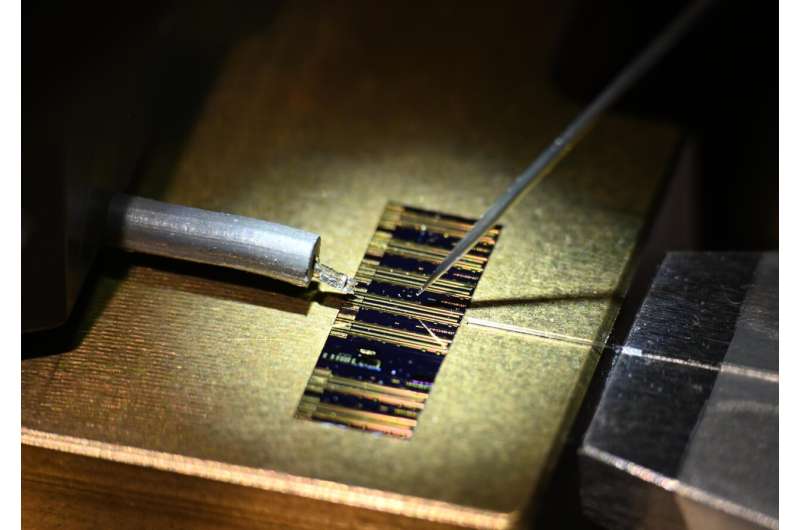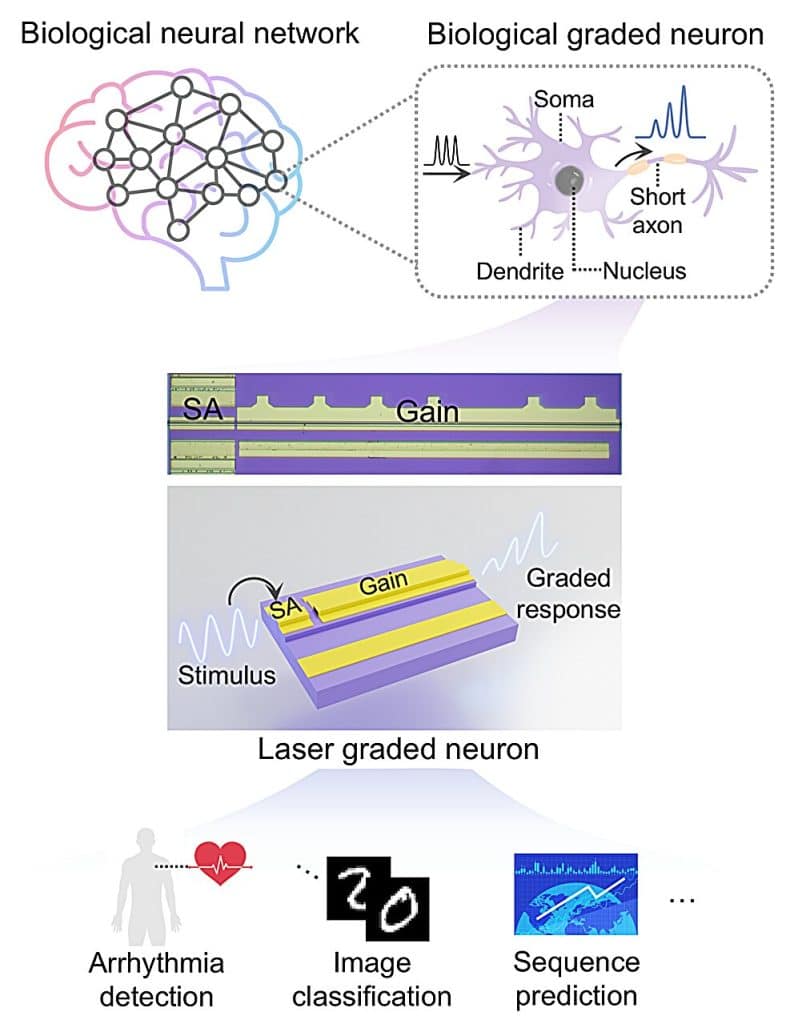Researchers have unveiled a groundbreaking laser-based artificial neuron that mimics the complex functions of biological nerve cells—only a billion times faster. With its incredible speed of 10 GBaud, this innovation promises to transform fields like artificial intelligence, real-time computing, and even healthcare.
In the human body, nerve cells, or neurons, process and transmit signals in two ways. Some use a continuous, graded approach to handle subtle and precise information, while others rely on binary, on-or-off signals. This new artificial neuron, built using advanced laser technology, recreates the more sophisticated “graded” processing found in biology but at unimaginable speeds.
Why This Matters

Think of this neuron as the ultimate upgrade for AI. Imagine a system that can recognize millions of handwritten images or analyze millions of heartbeats simultaneously. According to researchers from the Chinese University of Hong Kong, this innovation could enhance AI’s ability to make instant, accurate decisions in areas like autonomous vehicles, personalized healthcare, and financial markets.
“Our laser neuron isn’t just faster—it’s smarter,” says Chaoran Huang, the study’s lead researcher. “It processes information more efficiently and accurately than anything we’ve seen before, which is crucial for AI applications that need rapid, real-time responses.”
What Sets It Apart
Most current artificial neurons rely on photonic technology but have significant drawbacks—they’re slower, less efficient, and prone to losing information. This new laser neuron takes a different approach by injecting radio frequency signals into a specialized section of the laser, bypassing these issues. The result? A more straightforward, more powerful system that uses less energy.
Even a single laser neuron is so advanced that it can perform machine learning tasks independently, behaving like a mini neural network. Combined with others, it could form ultra-efficient systems capable of processing complex tasks with unprecedented speed.
Real-World Applications
The researchers tested the neuron in a cutting-edge system designed for speech recognition, weather prediction, and medical diagnostics. For instance, it processed data from 100 million heartbeats in just one second, identifying irregularities with 98.4% accuracy. This could mean faster, more reliable detection of heart conditions in the future.
The technology is also a game-changer for AI systems deployed in the real world, where decisions need to be made instantly—think autonomous vehicles navigating busy streets or smart devices responding to user commands.
What’s Next?

While the current breakthrough is impressive, researchers believe this is only the beginning. They hope to replicate the brain’s incredible power and efficiency by combining multiple laser neurons into a single system. Their next steps include creating more profound, connected networks and pushing the speed limits further.
In Huang’s words, “This is just the tip of the iceberg. By cascading these neurons together, we can unlock their full potential like billions of neurons work together to perform extraordinary tasks.”
As this technology advances, the possibilities are endless: more intelligent AI, faster data processing, and applications that could redefine industries. The future is bright—and laser neurons power it.
Source:techxplore.com


